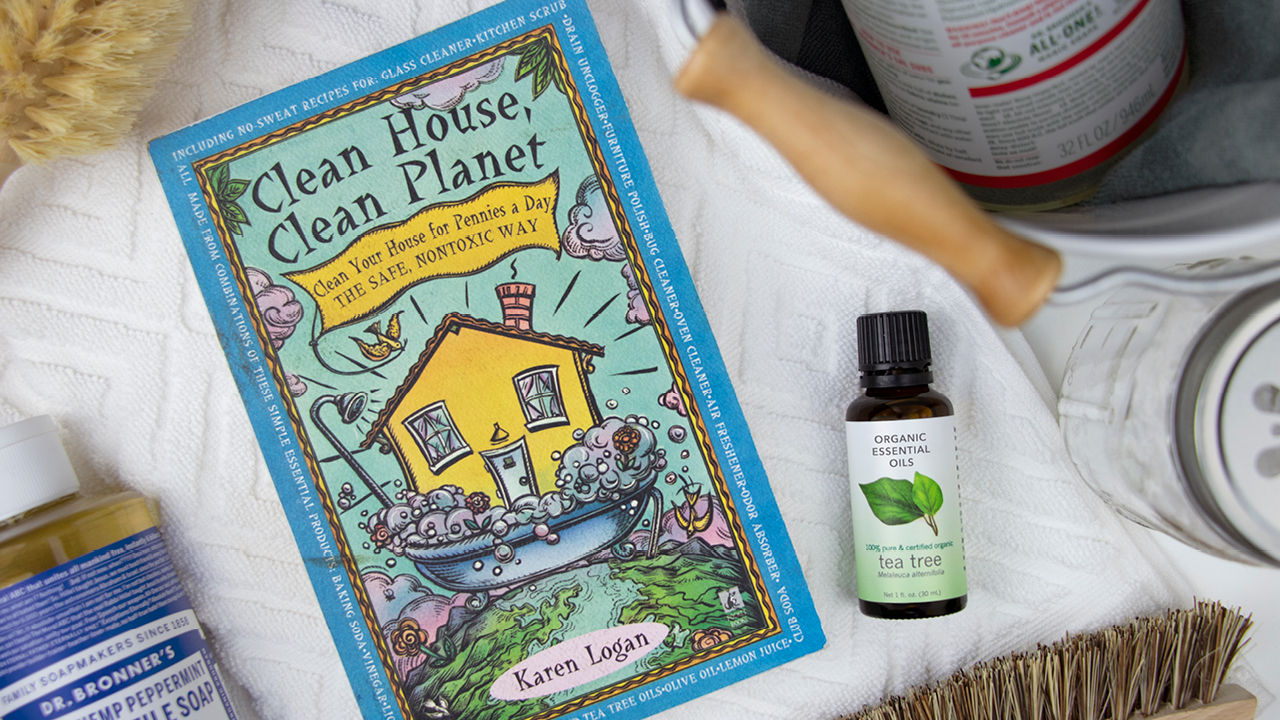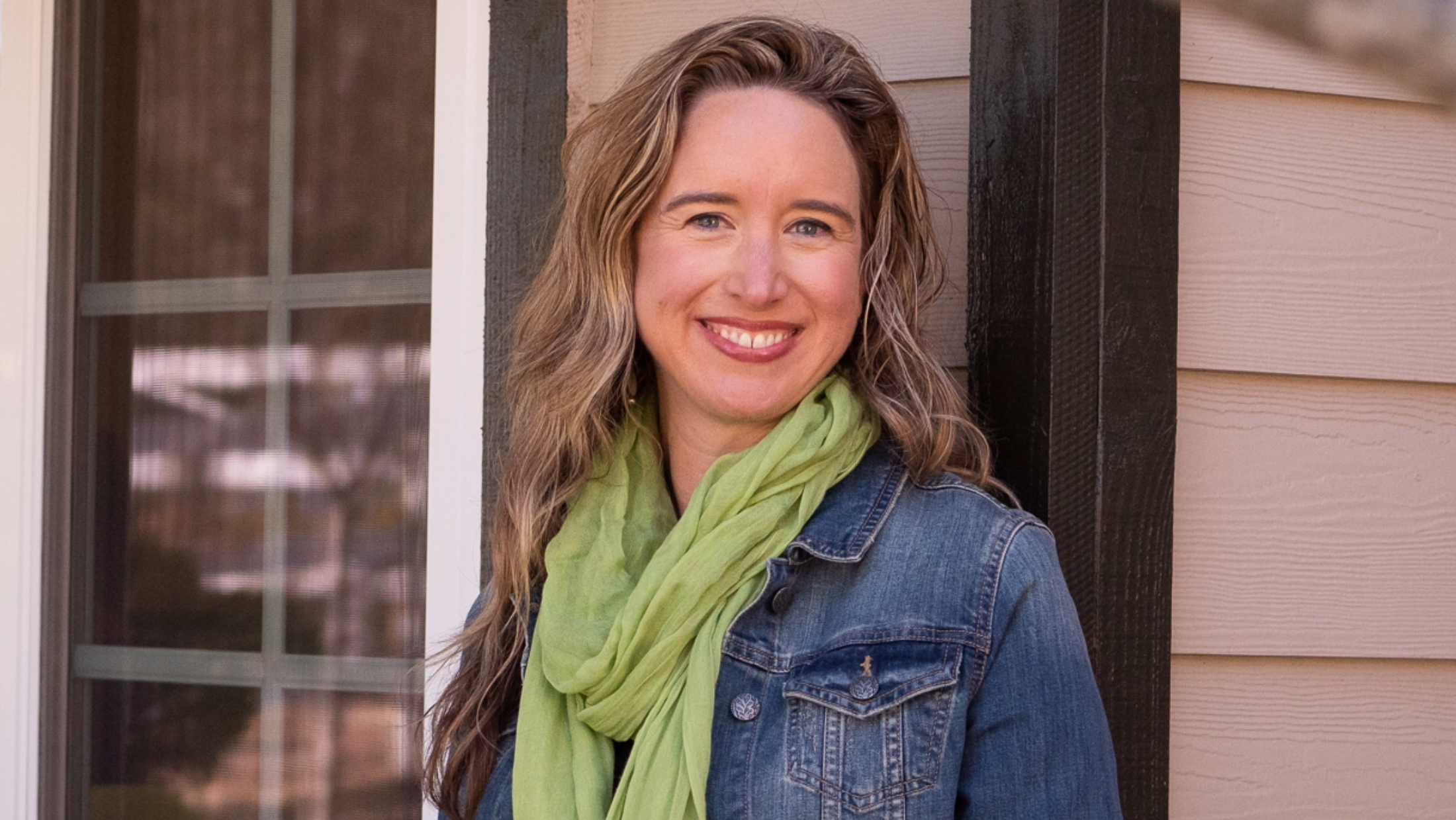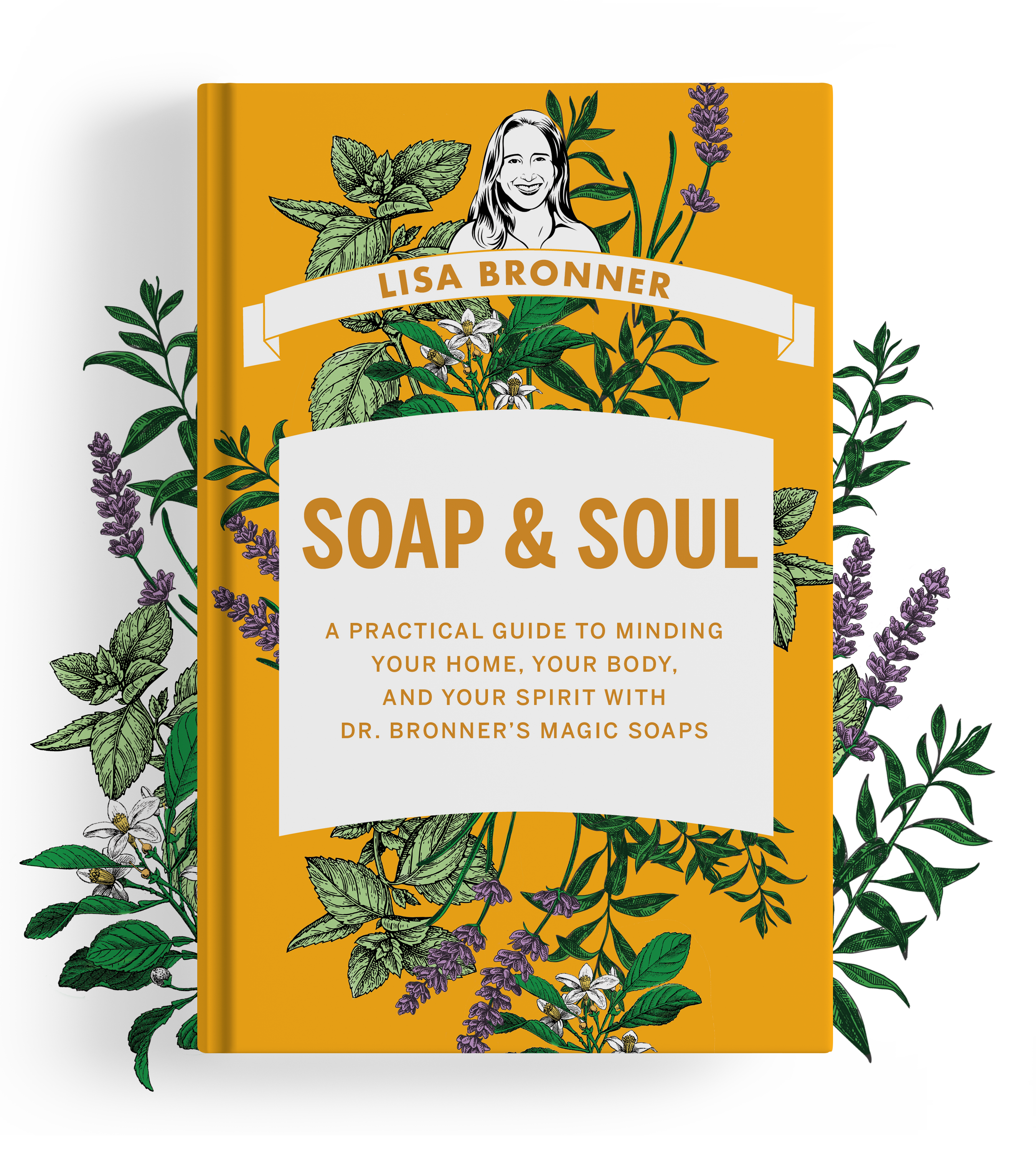
Karen Logan was my first green teacher. I found her book, Clean House, Clean Planet, lying around my parents’ house, one of the many we were given because they mention our soap. I’d like to say I read them all with profound contemplation, evaluating the merits of each. But I didn’t. Most got a cursory flip through, wherein I either got lost in excessive explanation or found them too simple. But if I’m being honest, it was the cover of this one that snagged me. It made housecleaning look cute, and it’s fun to pretend every so once in a while.
If you’ve spent any time elsewhere on my blog, you’ve probably come across my referencing this one. When I first contemplated writing my blog, I wondered why anyone would need another blog when they could just get this book. I hope I have since built upon Karen’s foundation, but I want you to know that this is where it began for me.
Who doesn’t love a Top Ten list? Let me give you mine for why I love this book:
- Karen doesn’t hit you over the head and tell you why you’re wrong about everything you ever thought you knew about anything. I hate books that make me feel stupid for not already knowing what the book is telling me. If I already knew this, I wouldn’t be reading your book! But Karen isn’t like this. She comes alongside the reader like two friends chatting over coffee. Talking about house cleaning. Rather unromantic. But so very real.
- It is absolutely chock full of recipes. There isn’t a nook of a house that Karen doesn’t speak to. Even creepy-crawly stuff like cockroaches, ants, and mice.
- She doesn’t only tell you what to do, she tells you why and how much it will cost. That’s the language I speak. Give it to me plain. I’ve got a budget to keep.
- She compares homemade options to conventional products both in price and efficacy. And she’s honest. There’s an “effectiveness rating” for each solution comparing it to its conventional counterpart. She’ll tell you if the natural equivalent of a toxic chemical is simply elbow-grease. I’m ok with that. But I do like to know. But most of the time the effectiveness rating is very high.
- She explains which products are most important to replace, giving you some idea of where to start. If you’re new to the green path, and you think every product you’ve been using is a ticking time bomb, and you’re tempted to throw them all out right now, DON’T!!! You’ll get overwhelmed and will end up re-buying everything you just tossed and be mad at the money you wasted. And that’ll be the end of your natural cleaning journey. Instead, she helps you prioritize which products to replace one at a time.
- It’s no fuss and has a great index. Use it as a reference book to jump right to what you need. In fact, I don’t think I’ve ever read it straight through cover to cover, although I have read it all many times. It makes sense whether you read it front to back or back to front or middle to front to back… For how many books can you say that?
- It’s authentic. You can tell she’s tried these out herself. There’s no scent of “designed by committee.” Between the lines, there’s a woman who has cleaned her house with myriad concoctions, some of which have worked and undoubtedly some that haven’t, taking notes all the while. She thanks her two-year old in the acknowledgments for “contributing the numerous cleaning opportunities.” What a positive outlook!
- It’s delightfully old-school. I mean, it’s a book! It doesn’t reference websites, because we didn’t do that sort of thing yet in 1997. We looked things up in books. It’s kind of fun – in a quaint sort of way.
- It is very impressive that she compiled all this information in the days of the internet’s infancy, and in the days before green became trendy. She must have felt like a lone soldier! Think of how many phone calls, newspaper articles, books, reference manuals, research abstracts she must have accessed to collect all this information. Plus, this was back when few groups were putting out this sort of research. In 1997, there was no Environmental Working Group, no Organic Consumers Association, no Cleaning Products Disclosure Act. Hats off to you, Karen!
- She uses Castile Soap (yes, Dr. Bronner’s by name) in a whole lot of her recipes. So full disclosure – if you use her book, you may find yourself buying more Dr. Bronner’s Soap. And yes, that does benefit my camp. But that doesn’t mean it isn’t good!!
Before you dismiss this book as “old,” let me remind you that dirt hasn’t changed any in the last 25 years. Further, the ingredients she uses in her recipes are even older still and recent research has only proven further what Karen was saying back then about toxicity of common house cleaners.
You’ll notice the absence of a link to a place to buy this book. That’s not an oversight. I don’t endorse any booksellers. So, again we’re going old-school here – copy “clean house clean planet karen logan” into your search engine and see where it takes you.
Just to take things one step further, since I happened to be contemplating some gifts I need to give, this is a perfect way to translate your crunchy self into a gift for someone else. Get this book, package it with a bottle of Dr. Bronner’s Castile Soap, a spray bottle or two, a bottle of tea tree essential oil, and a mason jar of baking soda. Tie it together and off you go. Useful, healthy, consumable, personal – what more could you ask of a gift?








Hi Lisa.
I began using Dr Bronner’s toothpaste a couple months ago and love it. One of the main reasons I bought it was because it did not have sodium lauryl sulfate in it, which is listed as a toxin at the Good Face Project website:
Good Face Index™Restricted Toxins List
SLS (Sodium Lauryl Sulfate) and SLES (Sodium Laureth Sulfate): Commonly called“sulfates”, this is a family of foaming agents which can often be contaminated with significant amounts of the proven carcinogens ethylene oxide and 1,4-dioxane. Common in: shampoos, conditioners, body wash.
Then I see that it is an ingredient in Dr Bronner’s Sal Suds Biodegradable Cleaner so I am wondering why you use it in one product but not the other?
And, I see that you use TOCOPHEROL in your Pure Castile Soap but the EWG website states:
Impurity: HYDROQUINONE (household cleaners)
Suspected of causing genetic defects, causing cancer, very toxic to aquatic life, causes serious eye damage, harmful if swallowed, and may cause an allergic skin reaction.
Yet, EWG still gives the product an overall A rating. This concerns me but I’m hoping you have a satisfactory explanation.
Keep up the good work!
Hi Gregg- Thanks for your questions! It’s great that you pay close attention to ingredients. Sal Suds is our biodegradable, mild non-toxic detergent and is a versatile household cleaner. It is formulated with Sodium Lauryl Sulfate (SLS) because of its keen ability to cut through grease and grime and to generate suds. Studies have consistently shown that SLS is safe to use in low concentrations and in products that are meant to be rinsed off – both of which are true of Sal Suds. The main concerns with SLS is that it can be a skin irritant for some people because it can be so drying. It is so good at picking up oils that it pulls them right out of our skin! You won’t find SLS in any of our personal care products (All-One Toothpaste, Castile Soap, and so on) and personal care products that do include it should be avoided. For a deeper dive into SLS, refer to my blog post here: https://www.lisabronner.com/there-is-no-cancer-risk-from-sls-sodium-lauryl-sulfate/. SLS is often confused with Sodium Laureth Sulfate (SLES), which is an ingredient of concern and which we do not use. SLES undergoes one extra ethoxylation step, which is where the possibility of 1,4Dioxane byproduction can occur. Ethoxylation must be done under pressure, which means a different piece of machinery. The SLS would not be contaminated with 1,4Dioxane. For verification, our Sal Suds was included in part of a test for products on store shelves to see which tested positive for the carcinogen. Sal Suds came back clean, which was good to hear, but not a surprise. (https://www.organicconsumers.org/news/natural-consumer-products-found-contaminated-cancer-causing-14-dioxane-groundbreaking-analysis).
Regarding tocopherols, the word is an INCI (International Nomenclature Cosmetic Ingredient) name for Vitamin E. Sometimes when tocopheryl acetate is made in the laboratory, it can be contaminated with trace amounts of hydroquinone during the manufacturing process. However, our Vitamin E is not made in a laboratory but rather comes from sunflower seed oil from Spain, and extracted by physical methods without chemical reactions, making contamination with hydroquinone impossible.
oh wow, I need this book!! anxious to read as I am new here..
[…] copy of Karen Logan’s book, Clean House, Clean […]
[…] Books of housecleaning recipes –Clean House, Clean Planet by Karen Logan and The Naturally Clean Home by Karen […]
Hi Lisa,
Does Karen Logan have any plans on updating this book? All of the companies she has listed for supplies are no longer in business. The book is fantastic though for all of her recipes.
Hi Karen- I don’t have an answer for that. Part of me wishes she would. But on the other hand, her recipes have really stood the test of time, haven’t they?
Where can you get this book
Hi Marilyn – Any brick-and-mortar or online bookshop will have it or be able to order it. I’m glad my article has inspired you. This book has served me well, and I know it will you too!
My first “green cleaning” book, too! It’s a great one and I have full library of cleaning books but this one is my favorite. It’s what introduced me to Dr. Bronner’s also and helped me start my own business. Good stuff!
It sounds like Karen Logan has influenced you as much as she has me. Good stuff, indeed!
Perfect Idea! Thank you xo